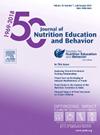Community-Engaged Development of a Nutrition Curriculum: The Go Healthy Indigenous-Supported Agriculture Study
IF 2.3
3区 医学
Q2 EDUCATION, SCIENTIFIC DISCIPLINES
引用次数: 0
Abstract
Objective
To understand how Osage Nation community members define healthy eating and develop a corresponding nutrition curriculum through community engagement.
Design
This project comprised a concurrent embedded mixed methods group concept mapping (GCM) study followed by focus group discussions (FGD) to provide feedback on a nutrition curriculum.
Setting
Osage Nation, Oklahoma.
Participants
In the GCM study, 54 participants were recruited from a study of an Indigenous-supported agriculture program. GCM study participants and the Go Healthy Advisory Group participated in 2 FGDs.
Phenomenon of Interest
For the first study, concepts related to healthy eating were explored. In the second study, participants provided feedback on curriculum clarity, perceived efficacy, and relevance.
Analysis
In the first study, a multidimensional scaling algorithm was used to plot statements, and concept clusters were interpreted in a facilitated meeting with participants. A basic content analysis approach was used in the second study.
Results
Five concept clusters related to healthy eating were identified. These clusters were used to generate an 8-module curriculum deemed clear, potentially efficacious, and relevant among FGD participants.
Conclusions and Implications
Community members contributed to a framework of healthy eating for the Osage community, which was used to develop a nutrition curriculum that will be integrated into an Indigenous-supported agriculture program. Future research should explore long-term sustainability and the broader cultural impacts of nutrition programs on Indigenous health and food sovereignty.
社区参与的营养课程发展:土著支持的健康农业研究。
目的:了解奥塞奇族社区成员如何定义健康饮食,并通过社区参与制定相应的营养课程。设计:本项目包括一项并行嵌入式混合方法群体概念映射(GCM)研究,随后是焦点小组讨论(FGD),以提供对营养课程的反馈。背景:俄克拉荷马州奥塞奇族。参与者:在GCM研究中,54名参与者是从一个土著支持农业项目的研究中招募的。GCM研究参与者和Go Healthy咨询小组参加了2次fgd。感兴趣的现象:在第一个研究中,我们探讨了与健康饮食相关的概念。在第二项研究中,参与者提供了关于课程清晰度、感知有效性和相关性的反馈。分析:在第一项研究中,使用多维尺度算法来绘制语句,并在与参与者的便利会议中解释概念聚类。第二项研究采用了基本的内容分析方法。结果:确定了与健康饮食相关的五个概念簇。这些分组用于生成8个模块的课程,这些课程在FGD参与者中被认为是清晰、潜在有效和相关的。结论和影响:社区成员为奥塞奇社区健康饮食框架作出了贡献,该框架被用于制定营养课程,该课程将纳入土著支持的农业方案。未来的研究应该探索长期的可持续性和营养计划对土著健康和粮食主权的更广泛的文化影响。
本文章由计算机程序翻译,如有差异,请以英文原文为准。
求助全文
约1分钟内获得全文
求助全文
来源期刊
CiteScore
4.20
自引率
11.50%
发文量
379
审稿时长
44 days
期刊介绍:
The Journal of Nutrition Education and Behavior (JNEB), the official journal of the Society for Nutrition Education and Behavior, is a refereed, scientific periodical that serves as a global resource for all professionals with an interest in nutrition education; nutrition and physical activity behavior theories and intervention outcomes; complementary and alternative medicine related to nutrition behaviors; food environment; food, nutrition, and physical activity communication strategies including technology; nutrition-related economics; food safety education; and scholarship of learning related to these areas.
The purpose of JNEB is to document and disseminate original research and emerging issues and practices relevant to these areas worldwide. The Journal of Nutrition Education and Behavior welcomes evidence-based manuscripts that provide new insights and useful findings related to nutrition education research, practice and policy. The content areas of JNEB reflect the diverse interests in nutrition and physical activity related to public health, nutritional sciences, education, behavioral economics, family and consumer sciences, and eHealth, including the interests of community-based nutrition-practitioners. As the Society''s official journal, JNEB also includes policy statements, issue perspectives, position papers, and member communications.

 求助内容:
求助内容: 应助结果提醒方式:
应助结果提醒方式:


